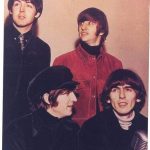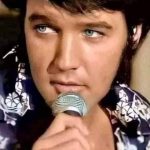The Rolling Stones – Have You Seen Your Mother .72


The Rolling Stones – Have You Seen Your Mother, Baby, Standing in the Shadow?
In 1966, The Rolling Stones released one of their most daring and unique tracks, “Have You Seen Your Mother, Baby, Standing in the Shadow?”. This song represents a pivotal moment in the band’s history, pushing the boundaries of rock music and defying the conventions of the time. Known for its energetic, almost chaotic sound and thought-provoking lyrics, it stands as a testament to the band’s ever-evolving artistry.
A Sonic Explosion
Musically, “Have You Seen Your Mother, Baby, Standing in the Shadow?” is an intense explosion of sound. The song features a driving beat, overlaid with brass horns—something unusual for rock music at the time. This energetic, almost frantic arrangement sets the song apart from more traditional rock tunes of the 1960s. The horns and distorted guitar riffs combine to create an overwhelming wall of sound that perfectly complements Mick Jagger’s raw and unfiltered vocals.
This sonic intensity was groundbreaking at the time, as the band began to incorporate elements of psychedelia, garage rock, and even avant-garde influences. It was a deliberate move away from their earlier, blues-inspired roots toward more experimental territory, which would later define albums like “Their Satanic Majesties Request”.
Lyrical Depth and Ambiguity
The lyrics of “Have You Seen Your Mother, Baby, Standing in the Shadow?” are as elusive as they are compelling. There is a sense of alienation and loneliness running throughout the song, with the repeated refrain asking if “your mother” has been seen, metaphorically suggesting someone important is hidden in the background, unnoticed.
Many interpretations of the song exist, with some speculating that the lyrics touch on themes of abandonment, strained relationships, or even societal pressures. The title itself evokes a sense of being overlooked or hidden in the shadows, making the song resonate with listeners who have experienced feelings of invisibility or neglect.
Visual Provocation
The song’s release was accompanied by one of the most controversial and iconic photographs of The Rolling Stones—the band dressed in drag. At the time, this was considered highly provocative and pushed societal norms. The image was a bold statement, challenging the gender norms of the 1960s and demonstrating the band’s rebellious and non-conformist image.
The photo shoot and the song itself embodied the counterculture spirit that The Rolling Stones helped define. Their willingness to shock and provoke their audience was a hallmark of their career, and this era was no exception.
Impact and Legacy
“Have You Seen Your Mother, Baby, Standing in the Shadow?” may not be as widely recognized as some of the Stones’ later hits, but it remains a crucial song in their catalog. It captured a moment of transition for the band, as they began to explore new sounds and themes, moving away from their early blues roots toward the more experimental phase of their career.
Despite its relatively short length, the song’s impact is undeniable. It set the stage for the more adventurous works to come and reinforced The Rolling Stones‘ reputation as one of the most innovative and boundary-pushing bands of their time.
Ultimately, “Have You Seen Your Mother, Baby, Standing in the Shadow?” is a song that continues to intrigue listeners with its raw energy, enigmatic lyrics, and audacious attitude. It’s a bold statement from a band unafraid to take risks and challenge the norms, proving once again why The Rolling Stones remain one of the most enduring forces in rock history.











